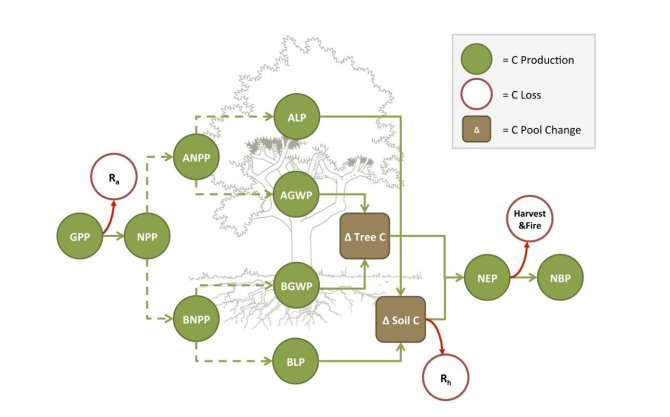
Project
Nitrogen losses from agriculture: modelling environmental impacts and pathways towards sustainability
Addressing the challenge how agriculture can meet increasing demands for food, feed, fibre and fuel while simultaneously reducing its environmental impacts is crucial in the urgently needed sustainability transition. Nitrogen is at the core of this challenge.
Nitrogen use in agriculture causes many environmental problems, including eutrophication, acidification and climate change, but is also crucial for achieving high yields. The overall objective of this research is to analyse the impacts of nitrogen use in agriculture on greenhouse gas exchange, air quality and water quality, as well as the potential of different strategies to reduce these impacts at the European and the global scale.
Safe boundaries for agricultural nitrogen inputs and required changes in nitrogen use efficiencies
Aim and methods: The first aim is to assess pathways of agricultural intensification that allow us to remain within a “safe operating space” while also increasing land productivity both at European and global scale. For this purpose, we establish ‘critical limits’ of nitrogen losses that should not be exceeded in view of ecosystem and human health. We use the INTEGRATOR model to assess nitrogen losses, nitrogen use efficiencies and yields in Europe under three scenarios:
- Current yields and current nitrogen use efficiencies
- “Optimal yields” (defined as 80% of the physiological yield potential)
- Optimal yields and “required” nitrogen use efficiencies (defined as the nitrogen use efficiency that is required to obtain optimal yields while not exceeding critical environmental limits).
Results give us an idea of the spatial variability in required (increases in) nitrogen use efficiencies. The potential to reach those increases is discussed in the light of results achieved in experiments on sustainable fertilization techniques.
A similar assessment of current, critical and needed nitrogen inputs and nitrogen use efficiencies has been performed at the global scale, using the Integrated Assessment Model IMAGE. Earlier assessments of critical N limits at the global scale have focussed on one global “planetary boundary”, while results from our study provide the first spatially explicit assessment of critical nitrogen losses. This is urgently needed as nitrogen inputs, losses and impacts are highly variable.
Results: Results give insight in the variation in agricultural nitrogen inputs at European and global scale and in the required changes in nitrogen use efficiency (NUE) to reconcile crop production with environmental thresholds for nitrogen.
1. In the EU, current agricultural nitrogen inputs exceeded safe thresholds, i.e. at least one of three nitrogen thresholds, in 85% of all agricultural land. Avoiding risks of surface water eutrophication from nitrogen runoff generally requires the largest nitrogen input reductions followed by thresholds for ammonia emissions to avoid exceedances of critical nitrogen deposition and finally nitrate leaching. In Europe, regions with intensive livestock farming, such as the Netherlands, Brittany in France and the Po valley in Italy are hotspots for exceedance of critical inputs. Returning to a safe operating space for nitrogen pollution by reducing nitrogen inputs at current NUE would decrease EU crop production by 50%. Due to the widespread transgression of thresholds, options for increasing nitrogen inputs to close yield gaps on land where thresholds are not transgressed are limited, only allowing for a small increase crop production of 4%. More information is given in: De Vries, W., J. Kros, J.C.H. Voogd, G. Louwagie and L. F. Schulte-Uebbing, 2021. Spatially explicit boundaries for agricultural nitrogen inputs in the European Union to meet air and water quality targets. Science of the total Environment 786. https://doi.org/10.1016/j.scitotenv.2021.147283
2. Achieving surface water targets in the EU without crop production losses requires substantial increases in cropping-system NUE, from currently 0.64 to 0.78. Achieving groundwater targets requires a modest increase in average NUE to 0.67. Most countries can achieve surface water targets at a NUE of 0.70–0.80, and groundwater targets at an average NUE of 0.50–0.60. Increasing NUE to 0.75–0.80, a target indicated in the Farm to Fork Strategy as part of the European Green Deal, is sufficient to reconcile environmental thresholds and current crop production on most, but not all agricultural land in the EU. In hotspot regions, crop production and nitrogen thresholds can only be reconciled at NUEs of > 0.90, which is not feasible. It is estimated that even at best management, only 80% of current crop production in Europe can be obtained without exceeding nitrogen thresholds. More information is given in: Schulte-Uebbing L.F. and W. de Vries, 2021. Reconciling food production and environmental boundaries for agricultural nitrogen inputs in the European Union. Science of the total Environment 786https://doi.org/10.1016/j.scitotenv.2021.147427
3. At global scale, current agricultural nitrogen inputs exceed safe thresholds in 66% of all agricultural land. As with the EU, avoiding risks of surface water eutrophication from nitrogen runoff generally requires the largest nitrogen input reductions, followed by thresholds for ammonia emissions and finally nitrate leaching. Areas with high exceedances include Europe, India, China, North America and the Middle East. In these regions, thresholds for several nitrogen-related impacts are often exceeded simultaneously, highlighting the need for an integrated approach to avoid pollution swapping. At the global level, reducing nitrogen inputs to respect thresholds lead to an estimated loss in crop production volume (57%). However, there is more room for intensification: increasing nitrogen inputs in regions where thresholds are not exceeded, mainly in Latin America and Sub-Saharan Africa, would increase global crop production by 14%. Required increases in NUE to reconcile crop production and nitrogen thresholds are substantial and strongly depend on assumptions regarding mitigation of non-agricultural nitrogen losses. More information is given in: Schulte-Uebbing, L.F., A.H.W. Beusen, A.F. Bouwman and W. de Vries, 2022. From planetary to regional nitrogen boundaries for targeted policy support. Nature (Submitted).

Nitrogen-induced enhancement of forest carbon sink
Aim and methods: The second aim of this PhD project is to improve our understanding of the degree to which anthropogenic disturbance of the N cycle affects global scale C storage in forests. For this purpose we collected data from forest fertilization experiments worldwide, and performed a meta-analysis to gain insights into the magnitude of the response of the forest woody biomass C sink to N addition (‘C-N response’) in boreal, temperate forests and tropical forests and a meta-regression to assess the impact of factors influencing variation in this response. Nitrogen-induced carbon sequestration by forests at global scale has been quantified by multiplying the variation C-N response (the additional carbon sequestered in forest aboveground woody biomass per unit of N deposition), derived by meta-regression, with global datasets on N deposition and on drivers of the C-N response. By doing so the first global spatially explicit assessment of N induced C sequestration based on results from forest fertilization experiments has been derived.
Results: Results show how different forest biomes respond to N addition which site factors (climate, tree and soil) affect those responses.
1. Results show a decrease in C-N response from boreal forests (mean estimated C-N response between 11–14 kg C per kg N) to temperate forests (mean estimated C-N response between 4–13 kg C per kg N) to tropical forests (no significant C-N response). Across biomes, the variability in C-N response was explained by factors related to stand characteristics (old forests responded less than young forests), climate (C-N response decreased with potential evapotranspiration) and soil (C-N response increased with soil N content). More information is given in Schulte-Uebbing, L. and W.de Vries, 2018. Global-scale impacts of nitrogen deposition on tree carbon sequestration in tropical, temperate and boreal forests: A meta-analysis. Glob Change Biol. 2018: 416-431. https://doi.org/10.1111/gcb.13862
2. Results from upscaling C-N responses showed no significant response to N addition for two thirds of the world’s forest, mainly in the tropical region. Although tropical forests account for by far the largest area of forests, the estimated C-N response is based on only few experimental data. However, our results confirm the well-established hypothesis that tropical forests are not nitrogen limited due to high rates of biological nitrogen fixation. Estimates for global N-induced C sequestration in trees vary from 40–140 Tg C yr-1, being 2-3 times lower than recent estimates based on stoichiometric scaling or modelling approaches. This implies N-induced C sequestration makes a minor contribution to the global carbon sink, and hardly offsets the warming impact of offsets N2O emissions (~880 Tg C-eq yr-1). More information is given in Schulte-Uebbing L.F., G.H. Ros and W. de Vries, 2022. Experimental evidence shows minor contribution of nitrogen deposition to global forest carbon sequestration. Global Change Biology 28: 899–917. http://dx.doi.org/10.1111/gcb.15960
3. In contract to the above, a new research paper published in Nature Communications revealed a considerable contribution of atmospheric nitrogen deposition to global carbon sink in forests. This study used results of thirteen 15N-tracer experiments in temperate, subtropical and tropical forest ecosystems in China, the US and Europe on the fate of added N in the form of ammonium and nitrate form and their contribution to forest carbon sinks. The study showed that about 70% of the added 15N-labelled N was retained in the forests with total ecosystem N retention being similar for ammonium and nitrate. However, a larger proportion of nitrate was retained in trees and larger proportion of ammonium in soils. Based on 15N-tracer-derived global maps of N retention in trees and soils and the C/N ratios in tree and soil compartments, the N deposition induced global forest carbon sink was estimated at 0.72 Pg C yr-1. This is about 20% of the annual global terrestrial C sink and comparable to the warming impact of agricultural N2O emissions. More information is given in Gurmesa, G.A., A. Wang, S. Li, S Peng, W. de Vries, P. Gundersen, P. Ciais, O. L. Phillips, E. Hobbie, W. Zhu, K. Nadelhoffer, Y. Xi, E. Bai, T. Sun, D. Chen, W. Zhou, Y. Zhang, Y. Guo, J. Zhu, L. Duan, D. Li, K. Koba, E. Du, G. Zhou, X. Han, S. Han and Y. Fang, 2022. Retention of deposited ammonium and nitrate and its impact on the global forest carbon sink. Nature Communications 13:880. (https://doi.org/10.1038/s41467-022-28345-1)
